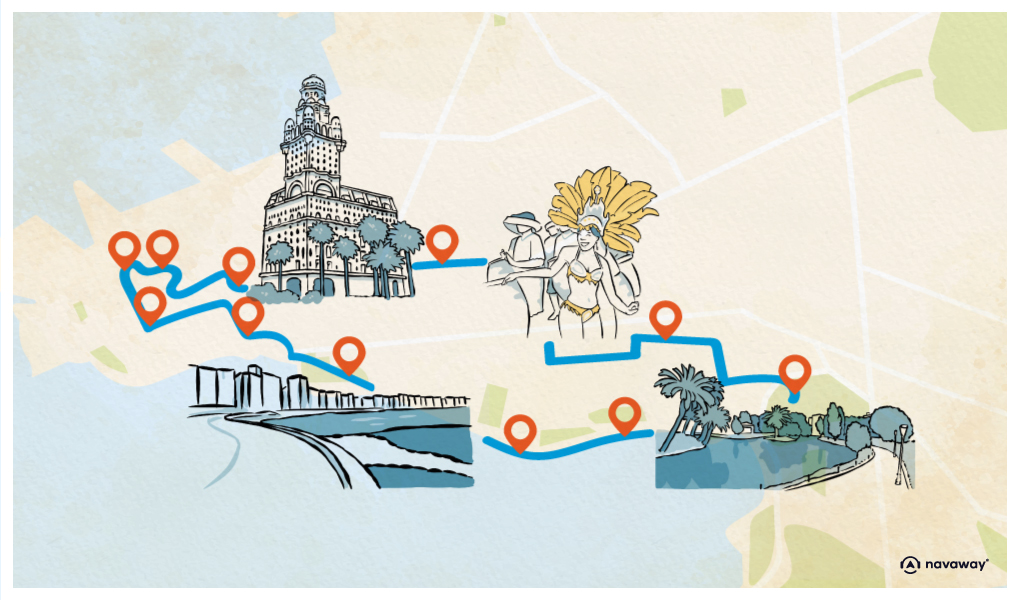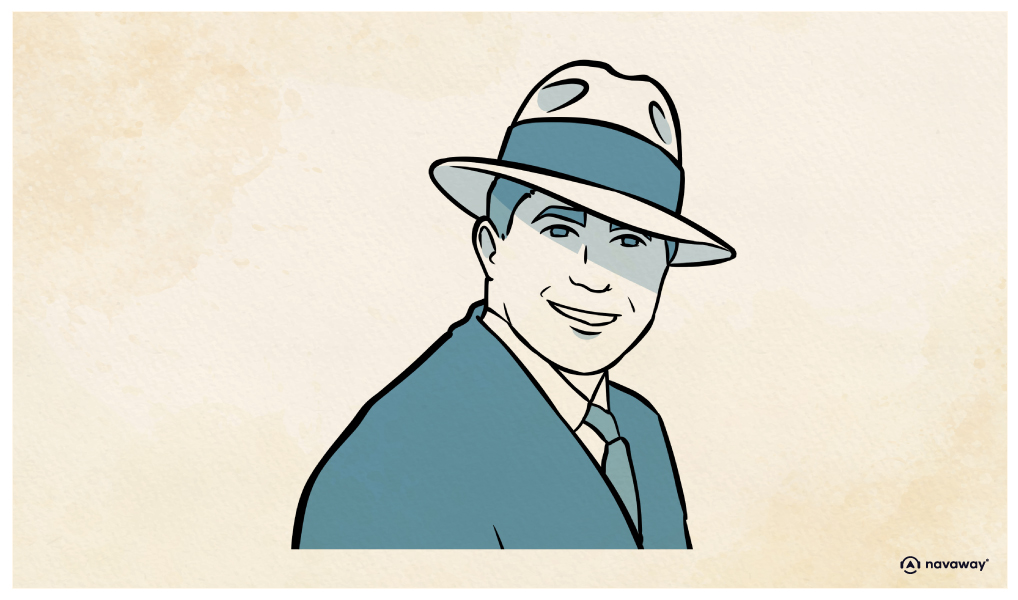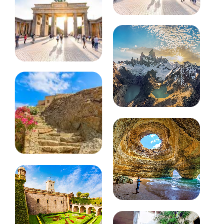
The Story of Tango

This point of interest is available as audio on the tour: Visit Montevideo, The Sixth Mountain From East to West
The street you’re crossing now is called Cumparsita. Since the last one was Carlos Gardel Street, this feels like the perfect moment to talk about tango. For those who don’t know, Gardel is the most iconic tango singer in history, his voice is even listed as part of UNESCO’s Memory of the World, and La Cumparsita is the most famous tango ever written. You’ve probably already guessed that Uruguay and Argentina share a deep cultural connection, rooted in their common past as provinces of the Río de la Plata. They’ve shared the same influences over the centuries, the same accent, the same food, the same obsession with mate and football… and the same passion for tango. Argentinians like to joke that Uruguay is just another Argentine province, much to the annoyance of Uruguayans. That constant confusion only reinforces Uruguayans’ strong sense of identity. As for tango, it was born right here, on the shores of the Río de la Plata, between two port cities: Buenos Aires and Montevideo. Musicologists agree that tango was being danced in Montevideo’s academies even before 1870. If today it’s more closely associated with Argentina, it’s largely because when tango made its grand debut in Paris, the trendsetting city of the time, it was introduced as a product of Buenos Aires. In reality, it was a Uruguayan, Gerardo Matos Rodríguez, who composed the world’s most recognisable tango, La Cumparsita. It was performed publicly for the first time here in Montevideo, in an old café that now houses the Tango Museum. Feel free to visit it if you’re curious to dive deeper. Now, let’s go back to the roots. In slave-trade documents, “tango” was the name for the holding pens in Africa where enslaved people were kept before boarding ships. Later, in the Americas, the word was used to describe the spaces where enslaved people were sold upon arrival. Beyond its name, tango was born from cultural fusion, African rhythms and traditions blended with the customs of thousands of immigrants who arrived in these growing port cities. Spaniards, Italians, French, Poles, Russians, all came with their own ballroom dances. There were “white dances” and “black dances,” but soon these influences began to mix. Slaves mimicked their masters, and the masters, often without realising it, mimicked right back, and in the process, a new dance was born. In the early days, tango music was dominated by guitar and flute, but it was the arrival of the bandoneón, a German wind instrument similar to the accordion, that gave tango its signature sound. Put simply, it’s music played by Italians, borrowing Spanish melodies, rooted in African-American rhythms, and brought to life with a German instrument. If you’d like to dive into this legendary culture and even try a few steps yourself, head to one of the city’s milongas, the traditional tango dance halls where this rich heritage still lives on.


Discover Montevideo with app
An interactive guide through the most beautiful streets, squares, and districts
19 fun audioguides full of historical facts, anecdotes, and legends





Comments